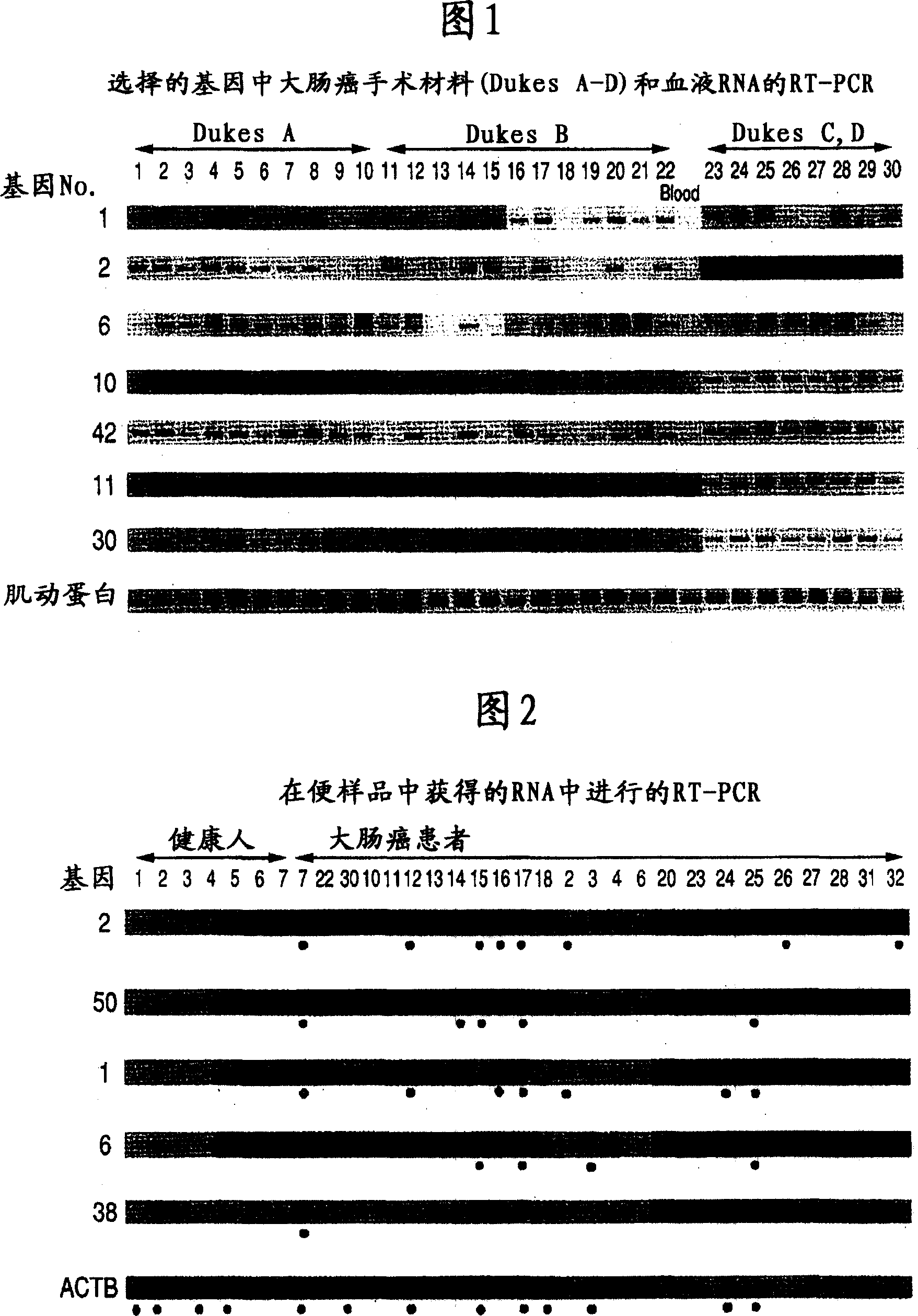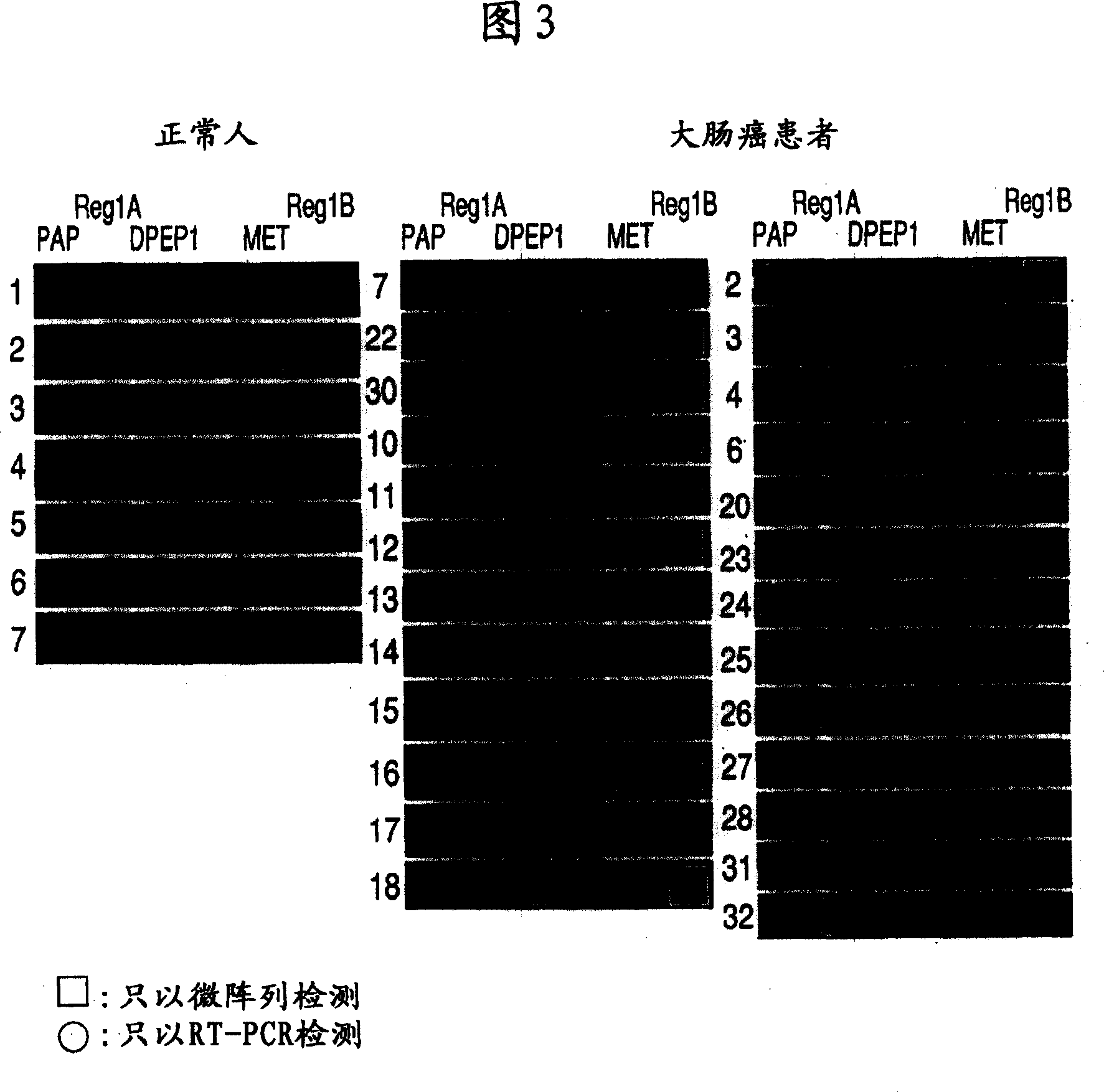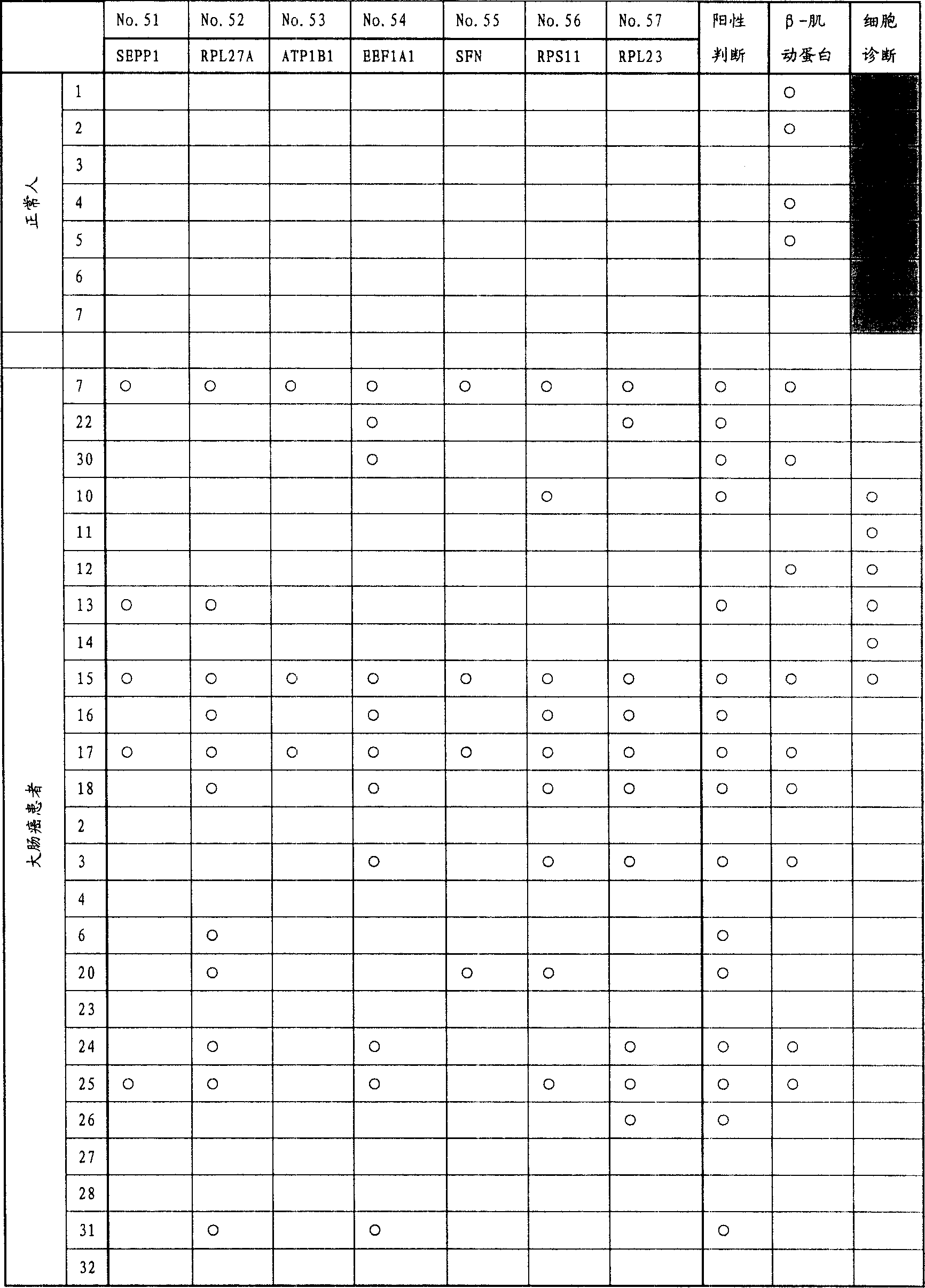Gene set used for examination of colon cancer
A colorectal cancer and gene technology, applied in the field of screening colorectal cancer cells, can solve difficult problems
- Summary
- Abstract
- Description
- Claims
- Application Information
AI Technical Summary
Problems solved by technology
Method used
Image
Examples
Embodiment 1
[0047] Example 1 (Selection Step 1) The first selection of marker genes for colorectal cancer screening
[0048] (1) Extract total RNA
[0049] Peripheral blood, 6 cases of normal colorectal mucosa, 6 cases of early colorectal cancer tissues (Dukes A, B), and 19 cases of progressive colorectal cancer tissues (Dukes C, D) were collected, and total RNA was collected. The recovery of total RNA is carried out according to a conventional method as shown below.
[0050] First, each tissue is crushed (peripheral blood is used as it is), ISOGEN manufactured by NipponGene is added, homogenized, a small amount of chloroform is added, and centrifuged at 8000 rpm for 15 minutes. Obtain the supernatant, add the same amount of isopropanol as the obtained amount, incubate at room temperature for more than 15 minutes, centrifuge at 15000 rpm for 15 minutes, and recover the precipitate. And the total RNA was obtained by ethanol precipitation (70%).
[0051] (2) Obtain the expression profiles and s...
Embodiment 2
[0059] Example 2 Optimization of PCR conditions for 50 selected genes
[0060] (1) Reverse transcription (synthesis of the first strand)
[0061] Using the SUPER SCRIPT Choice System manufactured by Invitrogen, 5 μg of the total RNA of the progressive colorectal cancer tissue obtained in Example 1 was reverse transcribed with random hexanucleotide primers. Specifically, proceed as follows.
[0062] Adjust the total RNA to 10μg / 10μl, add 1μl of random hexanucleotide primer to it, and keep it at 68°C for 10 minutes to heat-denature it. After cooling quickly on ice for more than 2 minutes, add reagents as shown in Table 3, keep at 25°C for 10 minutes, 42°C for 60 minutes, and 68°C for 15 minutes. After cooling down quickly, and after spinning down, 1μl of RNase H was added and kept at 37°C for 20 minutes. After this, about 20 μl of the first-strand cDNA solution was recovered.
[0063] table 3
[0064] Reagent
Add amount
5×First chain buffer
4μl
10mM dNTP...
Embodiment 3
[0077] Example 3 (Selection Step 2) The second selection of 50 genes by RT-PCR
[0078] Almost none of the cells separated from the stool by MACS (Magnetic cell sorting) using epithelial cell-specific antibodies (Dynabeads Epithelial Enrich, Invitrogen International) (detailed in 1 of Example 6) Contains lymphocytes and hemoglobin. From this, it can be seen that the 50 genes selected in the selection step 1 are genes that can be effectively screened for colorectal cancer by the isolated cells. On the one hand, in order to directly extract RNA from the stool for screening, it is necessary to reselect genes that are completely undetectable in lymphocytes or red blood cells.
[0079] Therefore, as in Example 1, total RNA was extracted from the other 22 Dukes A and B cases, 8 Dukes C and D cases, and peripheral blood, and RT-PCR was performed using the following method to understand the characteristics of 50 genes.
[0080] (1) Reverse transcription reaction (synthesis of single-stran...
PUM
 Login to View More
Login to View More Abstract
Description
Claims
Application Information
 Login to View More
Login to View More - R&D
- Intellectual Property
- Life Sciences
- Materials
- Tech Scout
- Unparalleled Data Quality
- Higher Quality Content
- 60% Fewer Hallucinations
Browse by: Latest US Patents, China's latest patents, Technical Efficacy Thesaurus, Application Domain, Technology Topic, Popular Technical Reports.
© 2025 PatSnap. All rights reserved.Legal|Privacy policy|Modern Slavery Act Transparency Statement|Sitemap|About US| Contact US: help@patsnap.com



